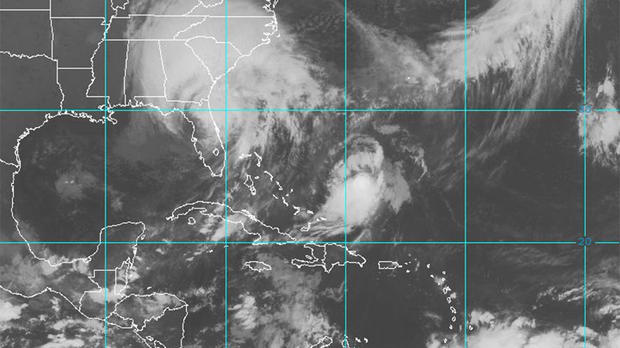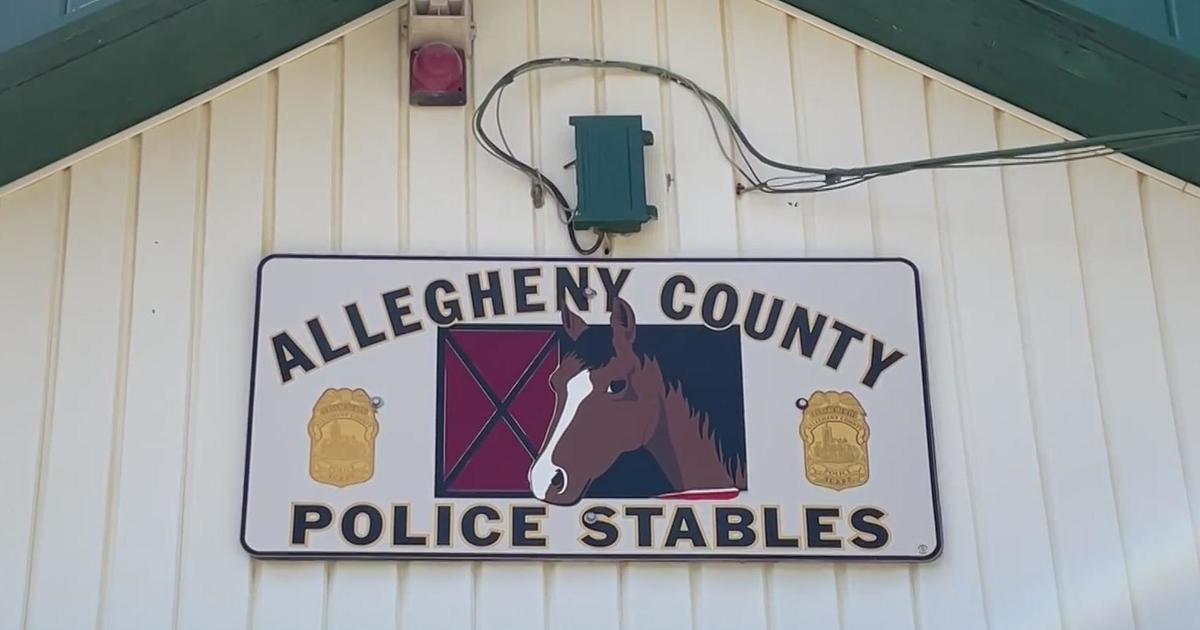Irma Continues To Weaken, But Threat Remains For Millions
Follow KDKA-TV: Facebook | Twitter
MIAMI (KDKA/AP) - MIAMI (AP) — Authorities sent an aircraft carrier and other Navy ships to help with search-and-rescue operations in Florida on Monday as a flyover of the hurricane-battered Keys yielded what the governor said were scenes of devastation.
"I just hope everyone survived," Gov. Rick Scott said.
He said boats were cast ashore, water, sewers and electricity were knocked out, and "I don't think I saw one trailer park where almost everything wasn't overturned." Authorities also struggled to clear the single highway connecting the string of islands to the mainland.
Five deaths in Florida were blamed on Irma, along with two in Georgia. At least 34 people were killed in the Caribbean as the storm closed in on the U.S. mainland.
From super storm to tropical storm. Check out the last 48hrs of #hurricaneirma2017 from radar. #upwithKDKA #irma #IrmaHurricane2017 pic.twitter.com/J6c82G8hrb
— Ron Smiley (@RonSmileyWx) September 11, 2017
The Keys felt Irma's full fury when it came ashore as a Category 4 hurricane Sunday morning with 130 mph (209 kph) winds. How many people defied evacuation orders and stayed during the storm was unclear.
Statewide, more than 6.7 million homes and businesses remained without power, and officials warned it could take weeks for electricity to be restored to everyone. More than 180,000 people huddled in shelters.
Former KDKA-TV Anchor Sonni Abatta talked to the "KDKA Morning News" from Orlando, where winds kept her family up all night long.
"You hear people describe the sound of really strong winds as freight trains coming through, like a whistling sound, it was like that all night. The trees were bashing against the house," she said.
Abatta adds her family was lucky because they didn't lose power but that it was a "scary, long night."
The scale of the damage inflicted by Irma began to come into focus as the hurricane weakened to a tropical storm and finally pushed its way out of Florida, but not before dealing a parting shot by triggering severe flooding around Jacksonville in the state's northeastern corner.
Around midday Monday, Irma also spread misery into Georgia and South Carolina as it moved inland with winds at 50 mph, causing some flooding and power outages.
During its rainy, windy run up the full 400-mile length of Florida, Irma swamped homes, uprooted trees, flooded streets, snapped miles of power lines and toppled construction cranes.
"How are we going to survive from here?" asked Gwen Bush, who waded through thigh-deep floodwaters outside her central Florida home to reach National Guard rescuers and get a ride to a shelter. "What's going to happen now? I just don't know."
Around the Tampa-St. Petersburg area, where Irma rolled through early Monday, damage appeared modest. And the governor said damage on the southwest coast, including in Naples and Fort Myers, was not as bad as feared. In the Keys, though, he said "there is devastation."
"It's horrible, what we saw," Scott said. "I know for our entire state, especially the Keys, it's going to be a long road."
He said the Navy dispatched the USS Iwo Jima, USS New York and the aircraft carrier Abraham Lincoln to help with search and rescue and other relief efforts.
#GOES-16 captured this infrared imagery of Hurricane #Irma, which now has winds near 110 mph. Latest info @ https://t.co/cSGOfrM0lG pic.twitter.com/0CLTsdiLq2
— NOAA Satellites (@NOAASatellites) September 10, 2017
Emergency managers in the islands declared on Monday "the Keys are not open for business" and warned that there was no fuel, electricity, running water or cell service and that supplies were low and anxiety high.
"HELP IS ON THE WAY," they promised on Facebook.
The Keys are linked by 42 bridges that have to be checked for safety before motorists can be allowed in, officials said. The governor said the route also needs to be cleared of debris and sand, but should be usable fairly quickly.
In the Jacksonville area, close to the Georgia line, storm surge brought some of the worst flooding ever seen there, with at least 46 people pulled from swamped homes.
The Jacksonville Sheriff's Office warned residents along the St. Johns River to "Get out NOW."
"If you need to get out, put a white flag in front of your house. A t-shirt, anything white," the office said on its Facebook page. "Search and rescue teams are ready to deploy."
I-4 WB at SR434. Stay off the roads!! pic.twitter.com/K9zO94vtHA
— FHP Orlando (@FhpOrlando) September 11, 2017
Florida Hurricane #Irma Power Outage Numbers as of 09/11/2017 6:00 AM ET. PDF at: https://t.co/MdtDTxRJZf #FLResponds pic.twitter.com/8hfJ6IzuWh
— Florida SERT (@FLSERT) September 11, 2017
As Irma began moving into Georgia, a tornado spun off by the storm was reported on the coast, and firefighters inland had to rescue several people after trees fell on their homes.
A tropical storm warning was issued for the first time ever in Atlanta, and school was canceled in communities around the state. More than 100,000 customers were without power in Georgia and over 80,000 in South Carolina.
Over the next two days, Irma is expected to push to the northwest, into Alabama, Mississippi and Tennessee.
People in the heavily populated Tampa-St. Petersburg area had braced for the first direct hit from a major hurricane since 1921. But by the time Irma rolled in the middle of the night Monday, its winds were down to 100 mph (161 kph) or less.
"When that sun came out this morning and the damage was minimal, it became a good day," said Tampa Mayor Bob Buckhorn.
(© Copyright 2017 CBS Broadcasting Inc. All Rights Reserved. The Associated Press contributed to this report.)




